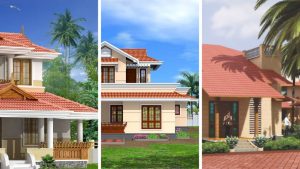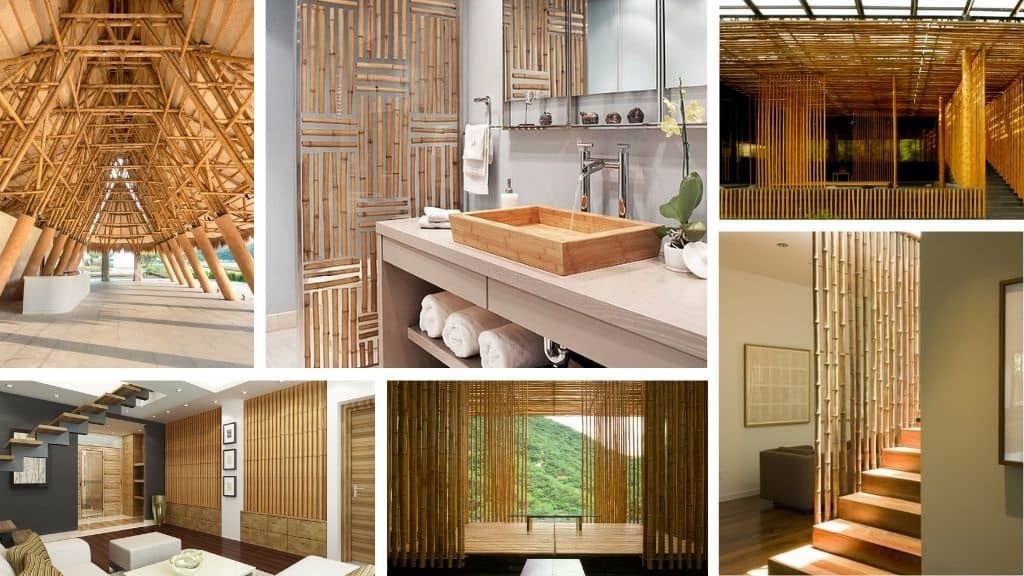
Have you ever heard of a building material that grows faster than traditional timber, is stronger than steel, and has a natural aesthetic that complements any architectural style? Enter bamboo, the eco-friendly and versatile building material that has been used for thousands of years in Asia and is now gaining popularity worldwide.
As the world seeks more sustainable and environmentally-friendly alternatives to traditional building materials, bamboo is emerging as a promising solution that offers numerous benefits, such as sustainability, strength, flexibility, and cost-effectiveness. However, as with any building material, bamboo has its limitations and drawbacks that must be taken into consideration.
So, let’s dive into the advantages and disadvantages of bamboo as a building material and see if it is the right choice for your next construction project!
What Makes Bamboo Exciting?
Bamboo as a building material has several advantages, which makes it an exciting material for construction. Let’s take a look at the advantages-
Sustainability
Bamboo Construction is one of the most sustainable building materials available, due to its fast growth rate and low environmental impact. It is a type of grass, not a tree, and can grow up to 91 cm (36 inches) per day, making it one of the fastest-growing plants on earth. Bamboo can also be harvested every 3-5 years without causing any damage to the environment, unlike traditional timber, which can take several decades to regrow. Additionally, bamboo sequesters carbon dioxide from the atmosphere as it grows, making it an excellent carbon sink.
Strength and Durability
Bamboo is an incredibly strong and durable material, with a higher tensile strength than many other building materials. This means it can withstand high winds, earthquakes, and other natural disasters. Bamboo is also highly resistant to pests, rot, and fire, making it an ideal choice for building in areas prone to these hazards. Additionally, bamboo is lightweight, making it easy to transport and assemble.
Versatility
Bamboo is a highly versatile material that can be used in a wide range of applications, from flooring and furniture to scaffolding and even bicycles. It can be treated to increase its durability and resistance to weathering, and can also be engineered to have different properties, such as increased strength or flexibility. Bamboo can be harvested at different stages of growth to create different types of bamboo, each with unique properties and uses.
Aesthetics
Bamboo has a unique and attractive appearance that can add warmth and character to any space. Its natural texture and grain patterns give it a distinctive look that can be used to create a variety of design styles, from rustic and traditional to modern and minimalist. Additionally, bamboo can be easily stained or painted to match different design preferences.
Flexibility
Bamboo is a flexible material that can be bent and shaped without breaking. This makes it an ideal material for creating curved or rounded structures, as well as for designing unique and creative building features. The flexibility of bamboo also makes it a great material for earthquake-resistant structures, as it can absorb shock and withstand lateral forces.
Cultural Significance
Bamboo as construction material has been used in many cultures around the world for centuries and has become an important symbol of sustainability, resilience, and innovation. Using bamboo in modern construction projects can help to connect us with this rich history and culture, while also providing a sustainable and forward-thinking solution to our building needs. Additionally, bamboo can be a source of income for communities that rely on it for their livelihoods, helping to support local economies and preserve traditional ways of life.
Walls Construction with Bamboo as a Building Material
Bamboo can be used to construct walls in a variety of ways, each with unique benefits and considerations. Here are some examples:
Bamboo Matting

Bamboo matting is a traditional way of using bamboo for wall construction. It involves weaving thin strips of bamboo together to create a mat that can be used as a wall covering or partition. The mats are lightweight and easy to install, making them ideal for temporary structures or interior walls. However, they may not provide as much insulation or protection from the elements as other wall construction methods.
Bamboo Panels

Bamboo panels are made by gluing together several layers of bamboo strips or veneers to create a solid panel. They can be used for walls, floors, and ceilings and are available in a variety of finishes and sizes. Bamboo panels are durable, lightweight, and easy to install, making them a popular choice for both interior and exterior walls. They also provide good insulation and soundproofing properties.
Woven Bamboo
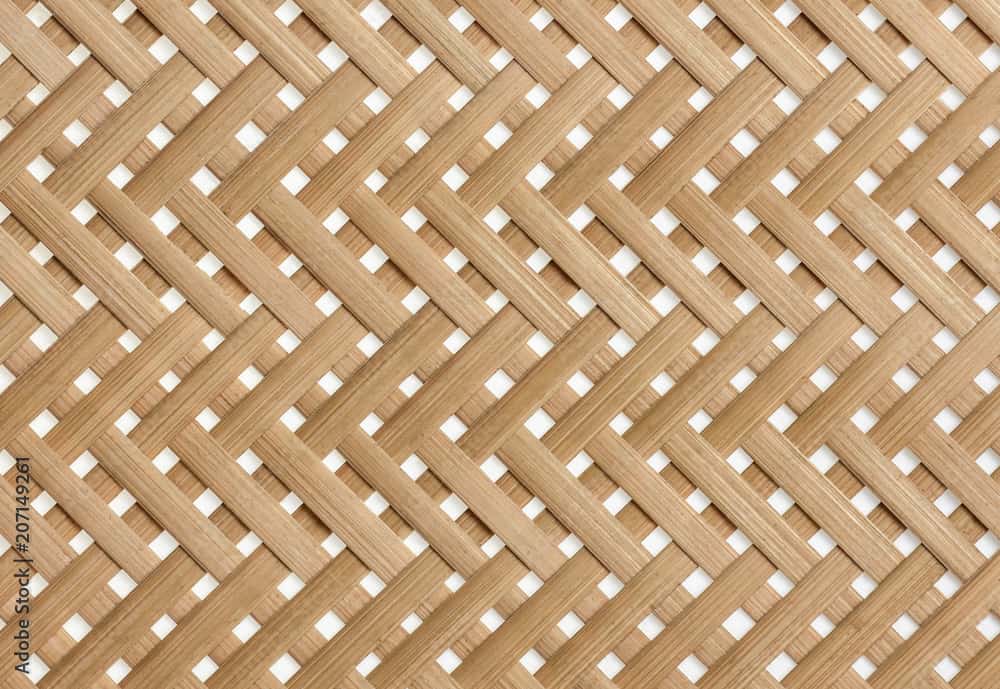
Woven bamboo involves weaving thin bamboo strips together to create a lattice-like structure that can be used as a wall. It provides good ventilation and natural light, making it ideal for tropical climates. However, woven bamboo may not be as sturdy as other wall construction methods and may require additional support.
Bamboo Framing
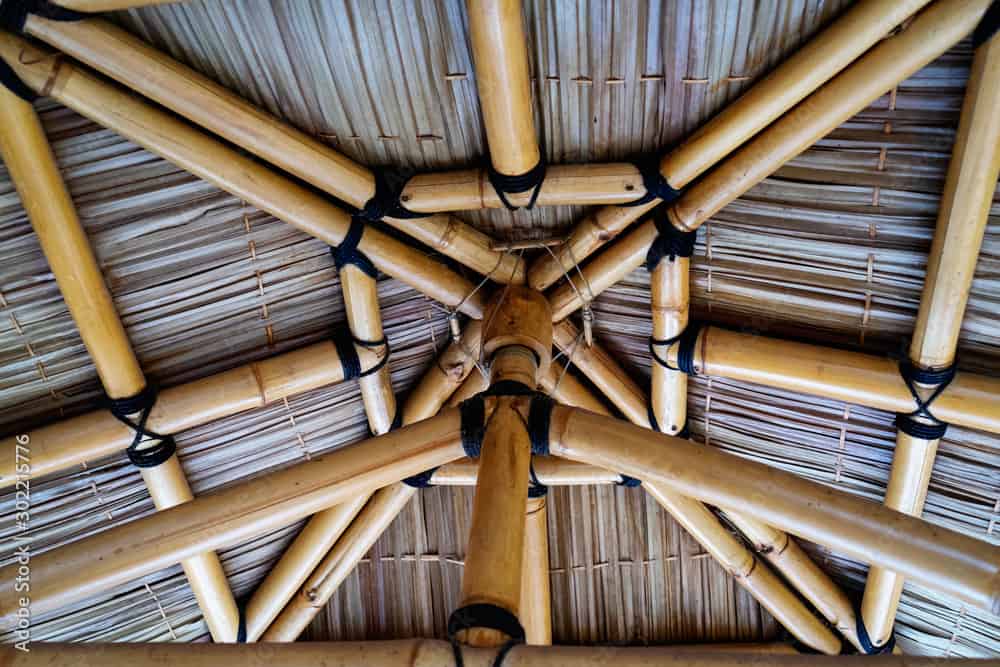
Bamboo can also be used as a framing material for walls. It can be cut to size and joined together with bamboo nodes to create a strong and stable frame that can support a variety of wall coverings, such as bamboo panels or woven bamboo. Bamboo framing is lightweight, durable, and sustainable, making it a popular choice for eco-friendly construction.
Bamboo and Earth Wall
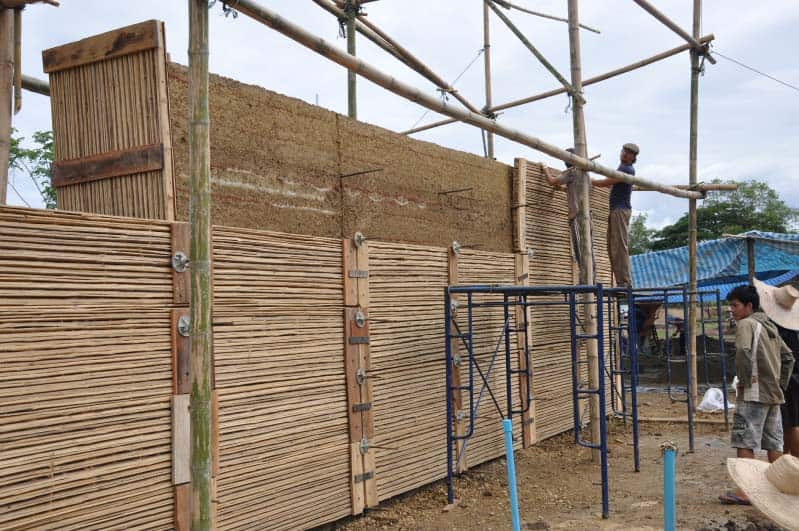
Bamboo can also be used in combination with earth to create a natural and sustainable wall. This involves building a frame using bamboo and then filling it with a mixture of earth, sand, and gravel. The earth provides good insulation and thermal mass, while the bamboo provides strength and stability. This method can be time-consuming and labor-intensive but provides a unique and eco-friendly wall construction option.
Bamboo construction offers a versatile and sustainable option for wall construction that can be adapted to a wide range of building needs and design styles.
Disadvantages of Bamboo as a Building Material
While bamboo construction has many advantages as a building material, there are also some disadvantages to consider:
Susceptibility to Pests and Fungi
Bamboo is susceptible to damage from pests such as termites and beetles, as well as fungal growth. To prevent these issues, bamboo must be properly treated and maintained.
Moisture Absorption
Bamboo can absorb moisture, which can lead to decay or rot over time. To prevent this, bamboo must be properly treated and protected with a waterproof coating or sealant.
Lack of Standardization
Bamboo is not standardized in the same way as other building materials, such as timber or concrete. This can make it difficult to ensure consistency and quality across different suppliers and sources of bamboo.
Limited Availability
While bamboo is abundant in some regions, it may not be readily available in other areas. This can increase the cost of transportation and make it less accessible as a building material in some parts of the world.
Fire Resistance
Bamboo is not as fire-resistant as other building materials, such as steel or concrete. This means that it may not be suitable for use in areas where fire safety is a concern, or additional fireproofing measures may need to be taken.
Final Thoughts – Bamboo as Construction Material
Bamboo as construction material is remarkable. It offers numerous advantages, including sustainability, strength, flexibility, and aesthetics. Its natural properties make it an excellent option for various construction projects, ranging from walls and roofs to floors and furniture. However, as with any building material, bamboo has its limitations and drawbacks, such as susceptibility to pests and fungi, moisture absorption, lack of standardization, limited availability, and fire resistance. Nonetheless, with proper treatment and maintenance, bamboo building can overcome these issues and continue to be a viable alternative to traditional building materials. As the world moves towards more sustainable and eco-friendly construction practices, bamboo is proving to be a valuable asset that we cannot ignore.
Bamboo as a Building Material FAQs
1. Is bamboo a good building material?
Certainly! Bamboo is a popular building material for a variety of reasons. It is a renewable resource that grows quickly, making it a sustainable choice for construction. It is also strong and durable, with a high strength-to-weight ratio, which means it can be used for structures in earthquake-prone areas. Additionally, bamboo is versatile and can be treated to resist pests and moisture, and can be shaped into a wide range of forms.
2. How long does bamboo last as a building material?
The lifespan of bamboo as a building material can vary depending on a variety of factors, including the type and quality of bamboo, the climate and environment where it is used, and the specific application and construction techniques used. However, when properly treated and maintained, bamboo can last for many years as a building material. Some estimates suggest that bamboo structures can last for up to 30-50 years or more.




